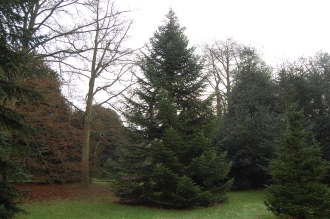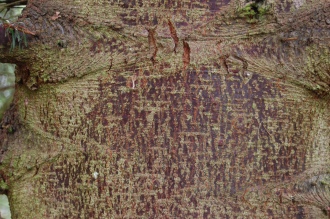Position: Full sun to partial shade
Flowering period: Spring
Soil: Moist, well drained
Eventual Height: 40m
Eventual Spread: 10m
Hardiness: 5a, 5b, 6a, 6b, 7a, 7b, 8a, 8b, 9a, 9b
Family: Cupressaceae
Cupressus nootkatensis is an evergreen coniferous tree with a pyramidal, upright habit. Its dark green leaves appear as flat sprays, its individual leaves are scale like and u to 3mm long. Its branches are often pendulous. Its trunk may achieve a diameter of up to 2m. Its grey/ brown bark is irregularly fissured. Its male flowers are greyish pollen cones with yellow pollen sacks. Its fruit are seed cones and up to 14mm across.
Cupressus nootkatensis, commonly known as Nootka Cypress, Yellow Cypress, Alaska Cypress or Alaska Cedar, is native to the west coast of North America. In its native habitat it grows on cool mountainous sites near the tree line. Cupressus nootkatensis is synonymous with Chamaecyparis nootkatensis and Xanthocyparis nootkatensis.
The etymological root of the binomial name Cupressus is derived from the old Latin name for ‘Italian Cypress’. Nootkatensis is named after Nuu-chah-nulth, the name of the first people of Vancouver island, Canada.
The landscape architect may find Cupressus nootkatensis useful as an attractive parkland tree with weeping branches. It is also a suitable hedging species.
Ecologically, Cupressus nootkatensis seeds are attractive to some birds.
The Royal Horticultural Society has given two varieties of Cupressus nootkatensis their prestigious Award of Garden Merit.












